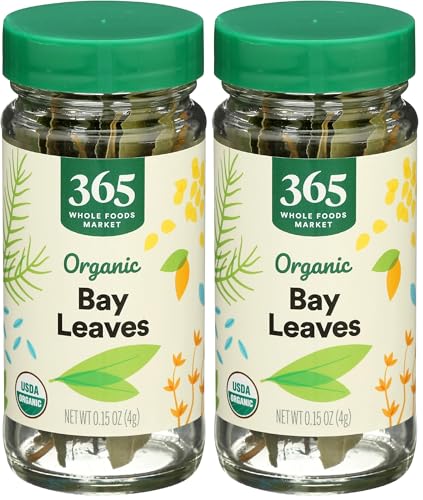Pasta is a budget-friendly, versatile, and filling pantry essential, especially for preppers. But if you’re serious about building a reliable long-term food supply, you’ll want to go beyond tossing boxes into the cabinet. Understanding how to store pasta for the long term can help you extend its shelf life for years or even decades, protecting your investment and ensuring food security in any situation.
*Some resources in article are affiliate links. Full disclosure here.

Why Pasta Is Perfect for Long-Term Storage
Dry pasta is one of the easiest foods to store and prepare, but not all pastas are created equal. Semolina pasta lasts the longest because it contains no fats or moisture. On the other hand, egg noodles, whole-grain, or gluten-free options have shorter shelf lives due to natural oils or added ingredients. Choosing the right type of pasta and the right method to store it can make all the difference in a long-term prepping strategy.
Best Practices to Store Pasta for the Long Term
1. Choose the Right Pasta
Stick with dry, plain semolina pasta when aiming for maximum longevity. Avoid varieties with oils, fats, or added vegetables if your goal is decades—not just years—of shelf life.
2. Freeze Pasta Before Storing
To kill off any insect eggs or larvae that may be present from the store, place pasta in the freezer for 3–5 days. Let it return completely to room temperature before sealing to avoid condensation.
3. Use Vacuum-Sealed Containers
Oxygen and moisture are the enemies of long-term food storage. A vacuum sealer removes both, significantly extending shelf life. For extra protection, include oxygen absorbers inside your sealed bags or jars.
- 【𝟏𝟎 𝐌𝐨𝐝𝐞𝐬 𝐰𝐢𝐭𝐡 𝐕𝐚𝐫𝐢𝐚𝐛𝐥𝐞 𝐒𝐞𝐭𝐭𝐢𝐧𝐠𝐬】Effortlessly seal various foods with our 10-in-1 vacuum sealer. Choose from “Dry, Moist…
- 【𝟗𝟓𝐊𝐏𝐀 𝐃𝐨𝐮𝐛𝐥𝐞 𝐏𝐮𝐦𝐩】Powerful 95kpa suction and 125w strong power achieve a tight vacuum seal in just 8-18 seconds — 50% f…
- 【𝐇𝐚𝐧𝐝𝐥𝐞𝐄𝐚𝐬𝐞 𝐃𝐞𝐬𝐢𝐠𝐧】Commercially designed vacuum sealer features a patented handle system for easy locking. Press the lid…
4. Prefer Jars Over Bags for Sharp-Edged Pasta
Pasta like spaghetti or fettuccine can puncture plastic over time. Use vacuum-sealed glass jars or canning jars for safer, longer-lasting storage.
5. Use Mylar Bags + Buckets for Bulk
For families or bulk prepping, use Mylar bags (with oxygen absorbers) inside food-grade buckets. Gamma seal lids add an airtight, moisture-resistant barrier and are great for stacking and organizing.
- HIGH QUALITY MATERIAL: Meet our top-notch Mylar bags for food storage with 4 sizes (10.2‘’ * 14”, 8.3” x12.2”, 7.1” …
- TRIPLE-LAYERED PROTECTION: These 1 gallon mylar bags have 3 layers (PET, aluminum foil, PE) to ensure maximum durability…
- SPECIAL CHARACTERISTICS: Meet our super cool mylar storage bags. They have 100 oxygen absorbers of 400cc (Available in p…
6. Add Desiccant Packs for Humid Climates
Humidity speeds up spoilage. In especially damp areas, add desiccant packs at the bottom of your containers or buckets to control moisture and reduce the risk of mold.
- FOOD GRADE & SAFE: The storage desiccant packs are made from food grade silicone and has passed a variety of strict qual…
- INDICATING DESICCANT & REUSABLE: Silica gel contains orange indicator beads, orange beads absorb moisture gradually satu…
- EFFECTIVELY CONTROL MOISTURE: Storage desiccant silica gel packets are specially designed to effectively absorb moisture…
7. Add Bay Leaves to Repel Insects
An old-school but reliable trick: tossing in a dried bay leaf can naturally repel pantry pests from your stored grains and pasta.
- The information below is per-pack only
- Brought to you by Whole Foods Market
- Organic bay leaves
8. Rotate Your Stockpile
Label your containers with the packaging date and always use the “first-in, first-out” rule. This ensures nothing goes stale and gives you a chance to inspect older batches periodically.
9. Check for Spoilage Signs
Discoloration, odd smells, or a chalky appearance can indicate mold or rancidity. If cooked pasta tastes strange or develops a gummy texture, it’s best to discard it.
10. Keep It Cool, Dark, and Dry
Temperature matters. Store pasta in a space below 70°F (21°C), away from light and fluctuating temperatures. Closets, pantries, or even hidden under-bed storage can work well if humidity is low.
How to Tell If Your Pasta Was Stored Incorrectly
Even when using the best techniques, long-term storage can occasionally go wrong. The key is knowing how to spot the warning signs before it’s too late. Here’s how to tell if your pasta has spoiled due to poor storage:
- Unusual Odor: A sour or musty smell means the pasta may have absorbed moisture or gone rancid, especially in whole-grain or egg-based varieties.
- Discoloration: Yellowing, white spots, or fading colors can indicate mold, oxidation, or nutrient loss.
- Insect Activity: Tiny holes in packaging, webbing, or visible bugs mean infestation—discard immediately.
- Crumbly Texture: Pasta that breaks apart easily or has a soft, chalky feel may have absorbed too much moisture.
- Odd Taste or Texture When Cooked: A gummy, bitter, or stale flavor is another sign that your pasta didn’t survive storage conditions.
If you notice any of these red flags, it’s safer to throw it out than risk illness, especially when foodborne pathogens are involved.
Conclusion
When stored correctly, pasta can outlast nearly everything in your pantry. Learning how to store pasta for the long term isn’t just about maximizing shelf life, it’s about being ready for the unexpected. Whether you’re prepping for emergencies or simply building a resilient pantry, these storage tips will ensure your pasta is ready when you need it most.








